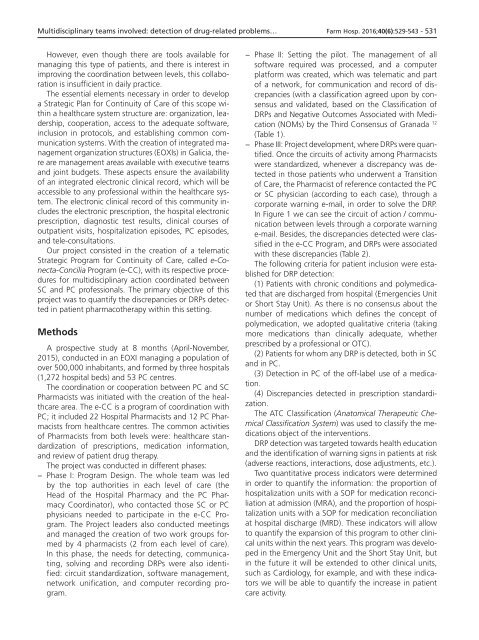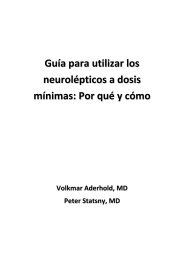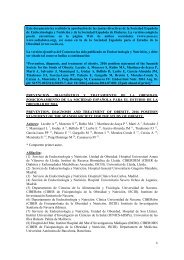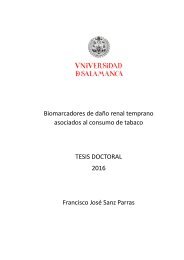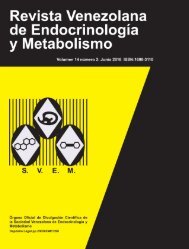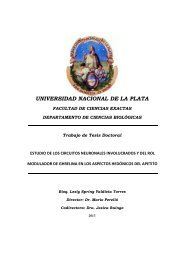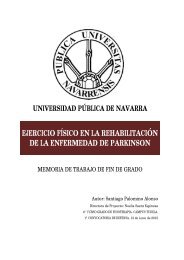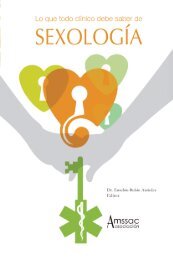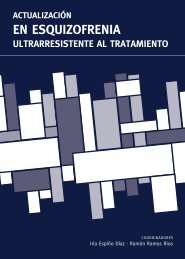Noviembre-Diciembre
156_v40n6(1)
156_v40n6(1)
Create successful ePaper yourself
Turn your PDF publications into a flip-book with our unique Google optimized e-Paper software.
Multidisciplinary teams involved: detection of drug-related problems… Farm Hosp. 2016;40(6):529-543 - 531<br />
However, even though there are tools available for<br />
managing this type of patients, and there is interest in<br />
improving the coordination between levels, this collaboration<br />
is insufficient in daily practice.<br />
The essential elements necessary in order to develop<br />
a Strategic Plan for Continuity of Care of this scope within<br />
a healthcare system structure are: organization, leadership,<br />
cooperation, access to the adequate software,<br />
inclusion in protocols, and establishing common communication<br />
systems. With the creation of integrated management<br />
organization structures (EOXIs) in Galicia, there<br />
are management areas available with executive teams<br />
and joint budgets. These aspects ensure the availability<br />
of an integrated electronic clinical record, which will be<br />
accessible to any professional within the healthcare system.<br />
The electronic clinical record of this community includes<br />
the electronic prescription, the hospital electronic<br />
prescription, diagnostic test results, clinical courses of<br />
outpatient visits, hospitalization episodes, PC episodes,<br />
and tele-consultations.<br />
Our project consisted in the creation of a telematic<br />
Strategic Program for Continuity of Care, called e-Conecta-Concilia<br />
Program (e-CC), with its respective procedures<br />
for multidisciplinary action coordinated between<br />
SC and PC professionals. The primary objective of this<br />
project was to quantify the discrepancies or DRPs detected<br />
in patient pharmacotherapy within this setting.<br />
Methods<br />
A prospective study at 8 months (April-November,<br />
2015), conducted in an EOXI managing a population of<br />
over 500,000 inhabitants, and formed by three hospitals<br />
(1,272 hospital beds) and 53 PC centres.<br />
The coordination or cooperation between PC and SC<br />
Pharmacists was initiated with the creation of the healthcare<br />
area. The e-CC is a program of coordination with<br />
PC; it included 22 Hospital Pharmacists and 12 PC Pharmacists<br />
from healthcare centres. The common activities<br />
of Pharmacists from both levels were: healthcare standardization<br />
of prescriptions, medication information,<br />
and review of patient drug therapy.<br />
The project was conducted in different phases:<br />
−−<br />
Phase I: Program Design. The whole team was led<br />
by the top authorities in each level of care (the<br />
Head of the Hospital Pharmacy and the PC Pharmacy<br />
Coordinator), who contacted those SC or PC<br />
physicians needed to participate in the e-CC Program.<br />
The Project leaders also conducted meetings<br />
and managed the creation of two work groups formed<br />
by 4 pharmacists (2 from each level of care).<br />
In this phase, the needs for detecting, communicating,<br />
solving and recording DRPs were also identified:<br />
circuit standardization, software management,<br />
network unification, and computer recording program.<br />
−−<br />
Phase II: Setting the pilot. The management of all<br />
software required was processed, and a computer<br />
platform was created, which was telematic and part<br />
of a network, for communication and record of discrepancies<br />
(with a classification agreed upon by consensus<br />
and validated, based on the Classification of<br />
DRPs and Negative Outcomes Associated with Medication<br />
(NOMs) by the Third Consensus of Granada 12<br />
(Table 1).<br />
−−<br />
Phase III: Project development, where DRPs were quantified.<br />
Once the circuits of activity among Pharmacists<br />
were standardized, whenever a discrepancy was detected<br />
in those patients who underwent a Transition<br />
of Care, the Pharmacist of reference contacted the PC<br />
or SC physician (according to each case), through a<br />
corporate warning e-mail, in order to solve the DRP.<br />
In Figure 1 we can see the circuit of action / communication<br />
between levels through a corporate warning<br />
e-mail. Besides, the discrepancies detected were classified<br />
in the e-CC Program, and DRPs were associated<br />
with these discrepancies (Table 2).<br />
The following criteria for patient inclusion were established<br />
for DRP detection:<br />
(1) Patients with chronic conditions and polymedicated<br />
that are discharged from hospital (Emergencies Unit<br />
or Short Stay Unit). As there is no consensus about the<br />
number of medications which defines the concept of<br />
polymedication, we adopted qualitative criteria (taking<br />
more medications than clinically adequate, whether<br />
prescribed by a professional or OTC).<br />
(2) Patients for whom any DRP is detected, both in SC<br />
and in PC.<br />
(3) Detection in PC of the off-label use of a medication.<br />
(4) Discrepancies detected in prescription standardization.<br />
The ATC Classification (Anatomical Therapeutic Chemical<br />
Classification System) was used to classify the medications<br />
object of the interventions.<br />
DRP detection was targeted towards health education<br />
and the identification of warning signs in patients at risk<br />
(adverse reactions, interactions, dose adjustments, etc.).<br />
Two quantitative process indicators were determined<br />
in order to quantify the information: the proportion of<br />
hospitalization units with a SOP for medication reconciliation<br />
at admission (MRA), and the proportion of hospitalization<br />
units with a SOP for medication reconciliation<br />
at hospital discharge (MRD). These indicators will allow<br />
to quantify the expansion of this program to other clinical<br />
units within the next years. This program was developed<br />
in the Emergency Unit and the Short Stay Unit, but<br />
in the future it will be extended to other clinical units,<br />
such as Cardiology, for example, and with these indicators<br />
we will be able to quantify the increase in patient<br />
care activity.


